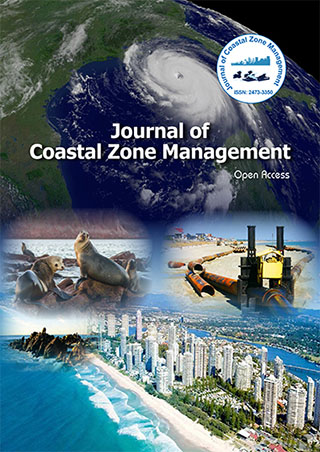Indexed In
- SafetyLit
- RefSeek
- Hamdard University
- EBSCO A-Z
- OCLC- WorldCat
- Publons
Useful Links
Share This Page
Journal Flyer

Open Access Journals
- Agri and Aquaculture
- Biochemistry
- Bioinformatics & Systems Biology
- Business & Management
- Chemistry
- Clinical Sciences
- Engineering
- Food & Nutrition
- General Science
- Genetics & Molecular Biology
- Immunology & Microbiology
- Medical Sciences
- Neuroscience & Psychology
- Nursing & Health Care
- Pharmaceutical Sciences
Abstract
Detection of Shifts in the Southeastern Coastline of the Caspian Sea with Landsat MSS, TM and ETM+ Images in 1977, 1987 and 2001
Seyyed Javad Hoseini*,Qadir Ashournejad
Shorelines are the most important linear phenomena on earth’s surface that have a dynamic nature. Thus, favorite coastal management and environmental protection towards sustainable development requires the extraction of the coastline and its changes. For this purpose, coastal zone monitoring in an appropriate time context is of great importance. As one of reliable and rather accurate sources, remote sensing data and satellite imagery in different periods are used for investigation and interpretation of shoreline changes and quantitative measurements. In this study, we tried to apply a new method to determine the shoreline changes using remote sensing and geographic information system. This method possesses simplicity and has acceptable results as well and is able to control and evaluate the results of the research process and its reliability is approved. For this aim, Mean Shift Clustering algorithm was developed for segmentation of MSS, TM and ETM+ images of 1977 (June 6th), 1987 (14 June) and 2001 to investigate the changes of south-eastern coastline of the Caspian Sea over a length of 16 km. After determination of shorelines over the intended years, we extracted the coastline of 1977 as the baseline, and then determined the changes between 1987 and 2001. The average measurements show a 14.03 meters recession of sea water for 1987 compared to that of 1977. However, the results for 2001 show an advancing sea water around 69.8 meters in 1977. Since the results of coastline changes are considered as the fundamental basis for analysis and other related applications, the data integrity and no other possible errors are essential. To control the accuracy of the extracted data on cross sections perpendicular to the coastline, statistical tests of sample, median absolute deviation, Z-Score and box plot was used. The results, confirms that the extracted data have no errors.
